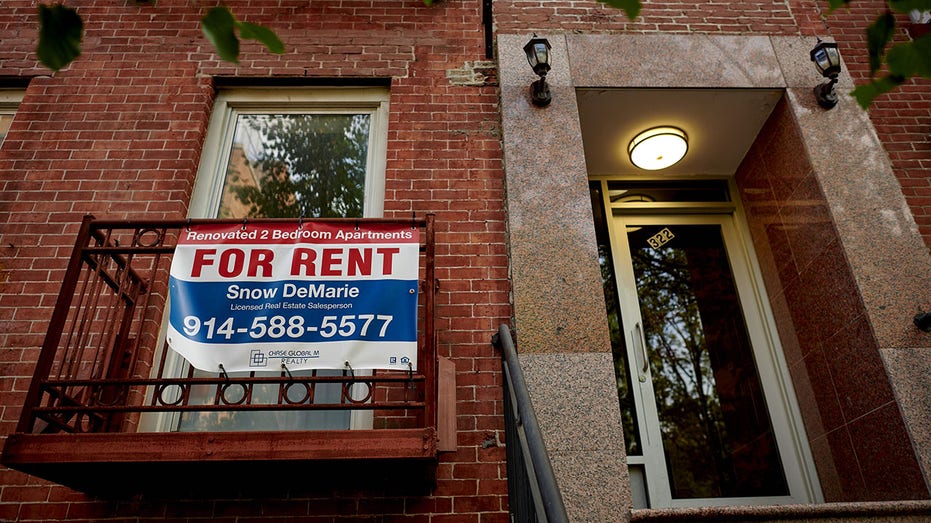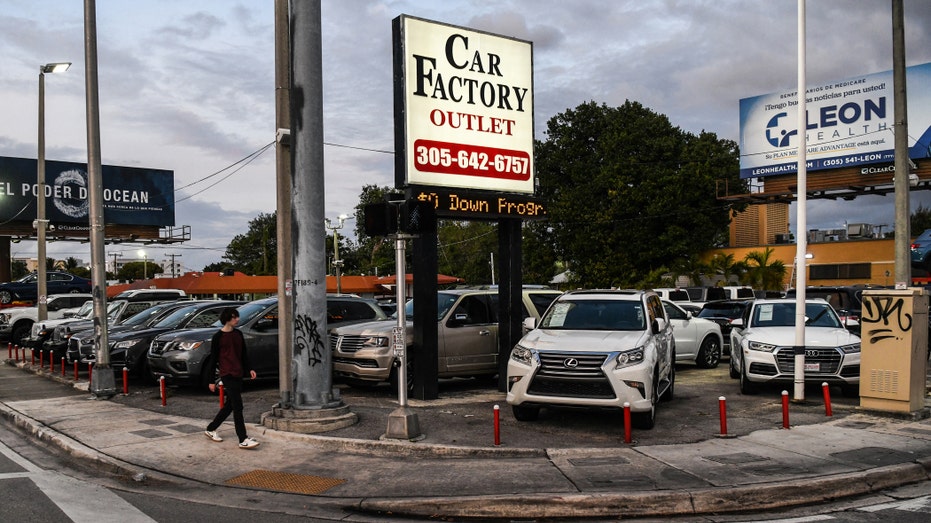March inflation breakdown: Where are prices rising, falling fastest?
Gas prices post big decline in March inflation report, but rent costs climb
March inflation numbers ‘critically important’ to Fed’s decision-making: Brady
During their appearance on "Mornings with Maria," MacroMavens President Stephanie Pomboy and Thornburg Investment Management President and CEO Jason Brady discuss inflation and the future for rate hikes.
Inflation moderated again in March thanks to a decline in energy costs, but other prices soared higher last month, continuing to squeeze Americans' pocketbooks.
The Labor Department said Wednesday that the consumer price index, a broad measure of the price for everyday goods that includes gasoline, groceries and rents, rose 0.1% in March from the previous month, down from 0.4% in February. Prices climbed 5% on an annual basis, down sharply from February's 6% increase and the smallest rise in nearly two years.
Other parts of the report pointed to a slower retreat for inflation, a worrisome sign for the Federal Reserve. Core prices, which exclude the more volatile measurements of food and energy, climbed 0.4%, or 5.6% annually. That is up slightly from February's 5.5% increase and marks the first acceleration in five months.
"Undoubtedly, the marked decline in headline inflation will be embraced as evidence that central bank efforts to cool the economy and rein in inflation is having an effect," said Jim Baird, CIO of Plante Moran Financial Advisors. "That’s the good news. The more troubling aspect of the report lies in the fact that core prices are proving to be comparatively sticky."
Here is a breakdown of where Americans are seeing prices rise the fastest – and where there has been some reprieve from higher inflation – as they continue to wrestle with the worst sticker shock in a generation:
HOW THE BANKING CRISIS COULD HAMMER SMALL BUSINESSES
Rent
Shelter costs, which account for about 40% of the core inflation increase, rose 0.6% for the month and are up 8.2% over the past year.
It is "by far" the largest contributor to the monthly increase, the Labor Department said in the report.
JAMIE DIMON WARNS BANKING CRISIS HAS RAISED ODDS OF RECESSION
Rising rents are a concerning development because higher housing costs most directly and acutely affect household budgets. Another data point that measures how much homeowners would pay in equivalent rent if they had not bought their home also climbed 0.5% from the previous month.

Rising rents are a concerning development because higher housing costs most directly and acutely affect household budgets. (Gabby Jones / Bloomberg via Getty Images / File / Getty Images)
However, experts noted that the Labor Department captures developments in shelter costs and market rents with a big lag. The latest data included in the March CPI report likely reflects the hot housing market in mid-2022.
"A relative lack of supply and a spike in demand had lifted housing costs across much of the country before the combination of elevated prices and sharply higher mortgage rates took a toll," Baird said. "Rental rates continued to rise, though, and the impact of turning points in housing market conditions typically takes more than a year to become apparent in the CPI shelter cost data."
Food
Food has been one of the most visceral reminders of red-hot inflation for Americans, but in March, the cost of groceries fell for the first time since September 2020.
US INFLATION EXPECTATIONS JUMP FOR FIRST TIME IN MONTHS, NY FED SURVEY SHOWS
Grocery prices edged down 0.3% over the course of the month, according to the data. On an annual basis, prices remain up 8.4% compared to the same time last year.

Eggs and dairy products are seen in a Kroger supermarket on Oct. 14, 2022, in Atlanta. (Elijah Nouvelage / AFP via Getty Images / Getty Images)
Despite the across-the-board decline, consumers paid more for a number of items in March, with the price rising for cereal (0.6%), rice (0.5%), bread (0.4%) and juices and nonalcoholic drinks (0.3%).
Mostly there were some substantial declines in food prices last month: the cost of eggs – which recently surged amid an outbreak of the avian flu, a highly contagious virus that often proves fatal for chickens – tumbled 10.9% in March on a monthly basis. The price of coffee, butter, fresh vegetables, fresh fruits, including bananas and citruses, milk and chicken fell last month.
"Lower-income households will likely benefit from the consistent slowdown in food prices," said Jeffrey Roach, chief economist at LPL Financial.
Energy
Americans saw some further reprieve last month in the form of lower energy costs, which fell 3.5% in March. That included a 4% drop in fuel oil and a 4.6% decline in gasoline. Compared with one year ago, the cost of gasoline is down about 17.4%.
FUND MANAGERS WORRY SYSTEMIC CREDIT CRUNCH COULD CRASH US MARKETS

Americans saw some further reprieve last month in the form of lower energy costs, which fell 3.5% in March. (Stefani Reynolds / AFP via Getty Images / File / Getty Images)
The big decline is largely because the figure is now compared with March 2022, when energy prices skyrocketed following Russia's invasion of Ukraine.
Economists warned that lower gas prices may not hold, given that OPEC+ – the coalition of oil-producing nations led by Saudi Arabia and Russia – unexpectedly announced earlier in April that it would slash its crude output by 1.15 million barrels per day.
"Given the recent pledge by OPEC+ to reduce production by more than 1 million barrels a day, this may somewhat reverse in coming months," said Joe Brusuelas, RSM chief economist. "One should proceed with caution on assuming further small increases or large outright declines in the energy data."
Gas prices have already started to inch higher as the average cost of a gallon of gas hit $3.62 on Wednesday, according to AAA, up more than 4% from one month ago.
Cars
There was some good news for Americans looking to buy a used car in March.

There was some good news for Americans looking to buy a used car in March. (Chandan Khanna / AFP via Getty Images / File / Getty Images)
Used car and truck prices, which have been a major component of the inflation increase, fell 0.9% over the month for a 12-month decline of 11.2%
However, the cost of new cars inched higher last month, rising 0.6% for the month. From the previous year, new cars are up 6.6%.
GET FOX BUSINESS ON THE GO BY CLICKING HERE
Travel and Transportation

An American Airlines flight takes off from Los Angeles International Airport. (Reuters / Mike Blake / File / Reuters Photos)
Airline fares surged again in March, with prices up 4% from the previous month. Tickets are up about 17.7% over the past year, according to the data.





















